Table of Contents
The concept of fire pits and outdoor fireplaces has ancient roots in many cultures worldwide. Māori use a form of fire pit known as a “hāngī” for cooking and communal gatherings. This method involves digging a pit in the ground, heating stones in the pit with a large fire, and then placing baskets of food on the hot stones. The food is covered with earth to cook for several hours.
This centuries-old cooking technique is still used today during special occasions and celebrations in New Zealand, like Matariki during our winter. While the hāngī is more about cooking than providing warmth or a focal point for social gatherings, it shares the basic concept of using a controlled outdoor fire in a pit that is universally enjoyed.
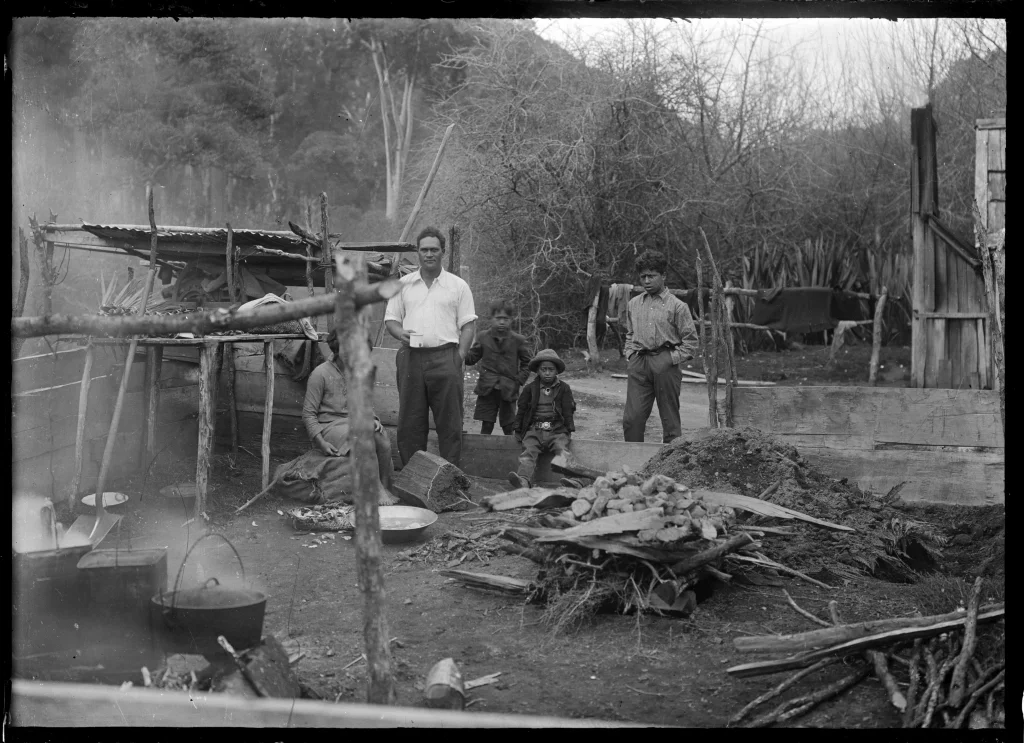
Fire pits, in a more modern sense, are a relatively recent addition to New Zealand’s outdoor living spaces. They are growing in popularity as part of the broader trend towards outdoor living and entertainment areas in homes. They provide some of the essentials in life, like warmth, socialising, and sometimes delicious fire-cooked food!
Design Integration of Reclaimed Hardwood in Fire Pit Areas
Fire pits, often the focal point of an outdoor setting, require thoughtful design to maximize accessibility and aesthetic appeal. A common design approach involves creating wide, open spaces around the pit, with configurations that are either circular or feature broad angles to accommodate gatherings. The inherent nature of fire pits, being recessed into the earth or raised and enclosed with fireproof materials like brick or stone, enhances thermal efficiency and safety. These structural elements, often reclaimed, beautifully complement the rustic charm of hardwood timber used in the surroundings.
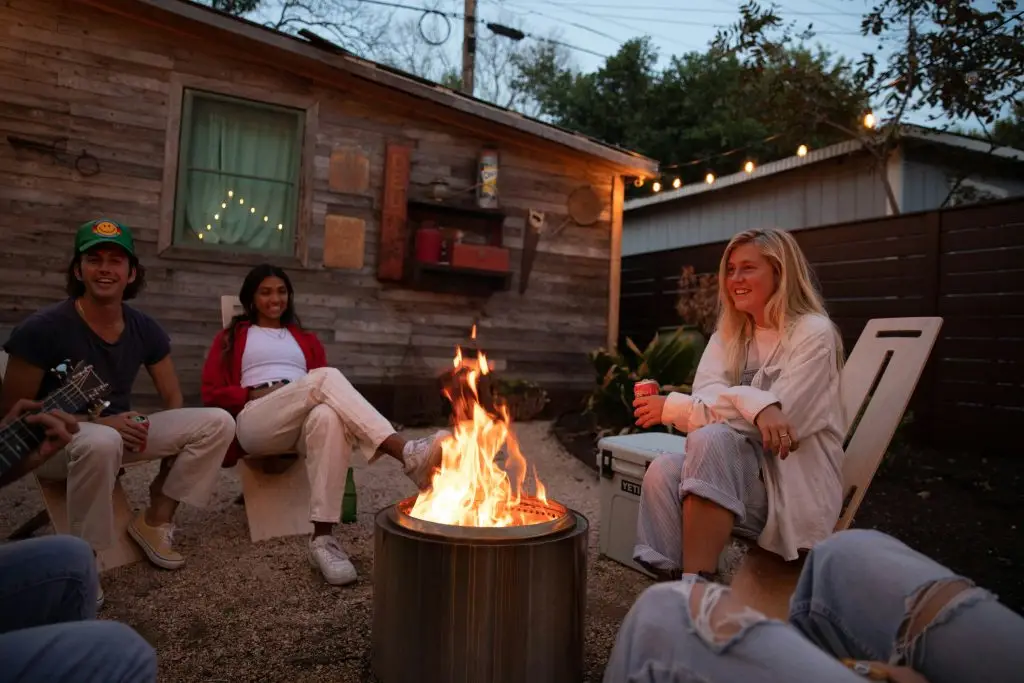
Reclaimed hardwood is particularly suited for this purpose due to its robustness and ability to withstand repeated exposure to heat. It is used as walls, seating, edging, and other features, enhancing the rugged, natural ambience that a fire invokes. Of course, this timber should be positioned safely away from direct flames to prevent hazards and ensure longevity.
The versatility of fire pits allows them to be integrated into various landscapes, from expansive backyards to cozy courtyards. Strategic placement considers local weather patterns, such as prevailing winds, to optimize warmth distribution and comfort. Additionally, modern fire pits can extend beyond mere heating elements to become central features of outdoor living spaces, complete with stone ovens, comfortable seating, and protective shelters.
When planning fire pit designs in New Zealand, it is crucial to adhere to specific safety regulations to prevent fire hazards. In New Zealand, certain conditions must be followed to ensure safety and compliance, which include keeping a safe distance from flammable materials and structures, and ensuring the fire pit area is clear of debris and is well-maintained. For a detailed list of these conditions and more safety tips, visiting Fire and Emergency NZ’s fire pit safety guidelines is highly recommended.
Some conditions are as follows:
- Must have a non-combustible hearth or base that extends a minimum of 500 mm either side of the left and right edges and a minimum of 1 m from the front edge of the fire box. This is to stop any burning material falling from the fire box landing onto anything combustible.
- Smoke vent/chimneys must have a purpose-built manufactured cap, or maximum 5 mm steel mesh fitted in the top to stop any hot ash or embers from escaping.
- Firewood storage must be in areas not affected by heat from the fire and clear of any possible hot ash or ember-affected areas.
- You must have a suitable way to extinguish the fire within easy reach a maximum of 5 metres away.
- You must not leave unsupervised while burning, or
- It must have a solid or mesh screen/door, which prevents any burning material from escaping the fire box.
- Fireplaces with external construction made of steel must be at least 1 metre clear of any of any part of a building, hedge, shelter belt or any other combustible material.
- If you cannot meet these conditions, you must apply for a permit.
- Note, Braziers have similar, but separate safety conditions.
- Check your local Fire Seasons at checkitsalright.nz and more at FENZ FAQ
This thoughtful integration of design, material, and safety not only enhances the functional aspects of fire pits but also elevates their aesthetic and recreational appeal, making them a cherished feature of any New Zealand home and safe to use for decades to come.
DIY Projects Using Reclaimed Timber for Fire Pit Areas
Creating a fire pit area in your outdoor space doesn’t just add warmth; it also infuses character and charm, particularly when incorporating reclaimed materials like hardwood sleepers. Whether you’re working with a modest budget or aiming for a grand design, there are numerous DIY possibilities that cater to various skill levels and aesthetic preferences.
Doing It Yourself can also be a great opportunity to get a fire pit up and running this Winter and can be a test run that will offer insight around fire positioning, surrounding and cladding requirements, as well as access, the shape of the pit and seating.
Simple and Rustic Fire Pit
For those new to DIY projects or looking for a straightforward weekend task, constructing a basic fire pit using reclaimed hardwood railway sleepers offers a rustic yet stylish solution. One creative yet simple idea is to use these sleepers as a base, topped with a reclaimed digger bucket or other heavy, thick steel drum or base to serve as the pit itself.
Keep an eye out for used oil drums and washing machines that can contain fire, ashes, and embers. This project can typically be set up in an open space, providing a focal point that is both functional and visually appealing. Its platform construction means it can be moved or dismantled without any fuss.
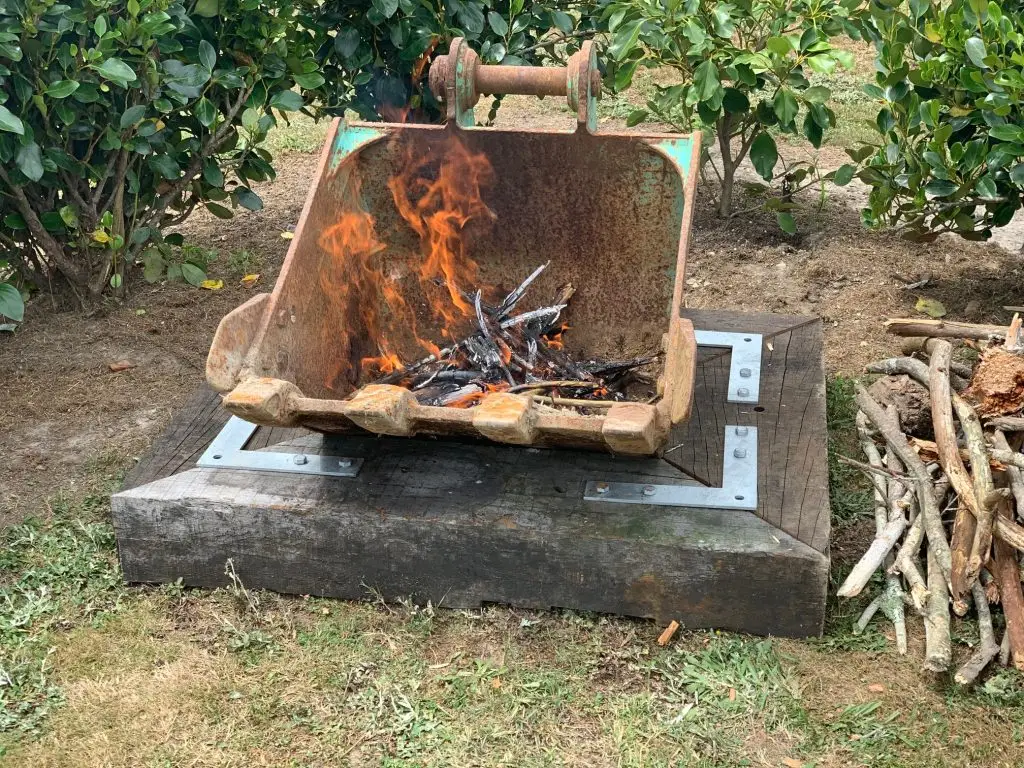
Tools and Materials Required:
- Hardwood railway sleepers for edging, base and seating.
- Reclaimed digger bucket, or other thick (steel) base type component like an old oil drum or washing machine drum.
- High-quality screws and brackets to keep it all together.
- Tools for basic landscaping (shovel, drill, saw, etc.) for levelling and shaping earth.
- Solid foundation materials such as gravel for drainage and aesthetics.
This setup not only uses sustainable materials but also adds a unique touch to your outdoor setting, making your fire pit stand out, and could be achieved within a few hours on a Saturday afternoon.
Integrating Natural Landscapes
For those with more space and resources, integrating the fire pit into the natural landscape can provide a more immersive experience. Utilizing natural slopes or terrains to embed a fire pit, like a retaining wall, allows for a more permanent and sheltered installation. Cladding the dug-in area with bricks and facing it out towards a patio or lawn can enhance its functionality and aesthetic appeal, providing a seamless transition from home to outdoor living space.
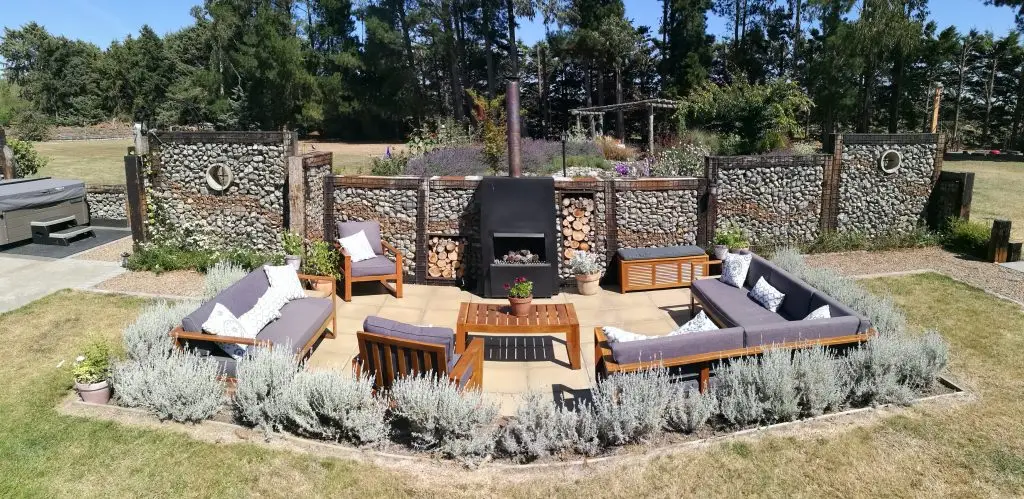
An approach like this should consider practical aspects like structural integrity for long term use, though keeping simple and not too big provides a great opportunity to have a go at the installation yourself as a Jack of all Trades. Seek advice if you are not completely confident.
Tools and Materials Required:
- Bricks or stone for cladding; recycled is always best.
- Landscaping tools for digging and shaping.
- Railway sleepers for retaining walls and expanding and defining the area.
- Comfortable seating arrangements to complement the cozy nook.
This approach leverages the natural contours of your land and creates a cozy gathering spot shielded from the elements. It is perfect for enjoying the outdoors regardless of the weather and absolutely adds value to the setting.
Professional Touch for Larger Projects
For expansive designs that connect living areas to outdoor spaces, consulting with professional designers and installers is advisable. These experts can ensure that the transition from indoor to outdoor is visually cohesive and structurally sound, incorporating elements like patios, retaining walls, and the fire pit itself into a unified design.
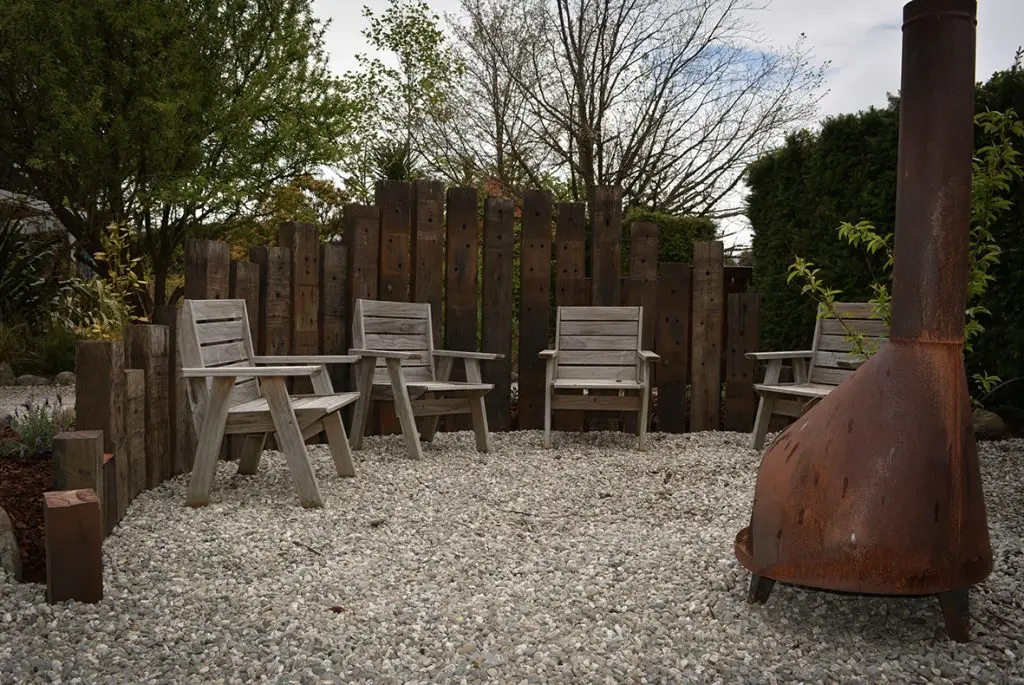
Engaging professionals helps support the integrity of the construction and ensures that the installation meets all safety standards, building codes and/or council requirements, particularly important when the design involves multiple materials and complex layouts.
These DIY project ideas offer a starting point for anyone looking to enhance their outdoor living space with a fire pit. They might also provide the inspiration for a more significant design or development as one sits around the fire on a starry night, reflecting with others.
A fire pit can be an awesome addition to the colder seasons, but one all year round is even better. It can be imagined and constructed over time, and it can be so much more than a hole in the ground!
From simple setups to more integrated designs, using reclaimed timber around your winter setting not only adds a touch of rustic charm but also promotes sustainability. As you plan your fire pit project, consider the scale and scope that best fits your space and capabilities, and do not hesitate to involve professionals when tackling more complex installations.

